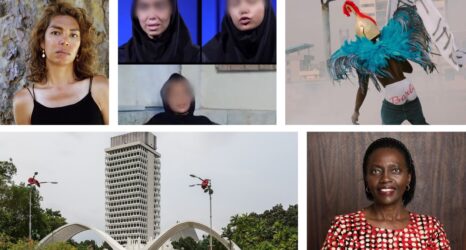Ellen Chesler and Terry McGovern have co-edited a timely and important collection of analytical essays and personal reflections in their new volume, Women and Girls Rising. The volume tries—and largely succeeds—to offer a thoughtful reckoning of the influence of the U.N. Conference on Women held in Beijing in 1995. It is part of a series developed by Routledge, entitled Global Institutions.
And global is one of this volume’s strong suits. With contributions from authors from more than 20 countries and discourses that run the gamut—from highly personal commentaries praising the U.N.’s efforts to sharp critiques of member nations’ failures to live up to their own professed support for women’s rights and gender equity—the volume reminds us that it takes more than signing an aspirational document like the Convention on the Elimination of Discrimination Against Women (CEDAW)—which 188 countries have approved, though notably not the U.S.—to transform a society that oppresses women.
The co-editors of this volume carefully tread a half-full/half-empty high wire. They appropriately celebrate real accomplishments over the past few decades, such as providing greater access to education for girls and reforming state, local and international laws and covenants to acknowledge violence against women as a violation of human rights. Importantly, the editors and the majority of contributors honestly acknowledge the continued resistance by most governments at all levels to women’s rights. They point especially to the growing and powerful nature of the backlash against women’s access to reproductive justice, whether in the U.S. or in Egypt.
Many of the largest and seemingly most powerful societies—from Brazil to the United States to India and China—are discussed in terms of measuring progress of gender equity policies or lack thereof. Notably absent is Russia and much of Western Europe. There are excellent pieces by leading feminists, including Jacqueline Pitanguey, Charlotte Bunch, Roxanna Carillo, Devaki Jain and Farida Shaheed. In addition, there are thoughtful contributions that help to unravel the complicated status of women in Muslim societies and in the Middle East and North Africa region. While one can never achieve full global coverage in one volume, I would have liked more contributions from women located in sub-Saharan African countries. As is, there are two significant pieces—one bravely examining LGBTQ and sexuality issues in Uganda by Sylvia Tamale, and another by Wanjira Mathai, on Africa’s Green Belt Movement, which was founded by her Nobel Prize-winning mother, Wangari Mathai
Another strength of the volume is its intergenerational character. There are essays and reflections from veterans of international women’s movements over the past 40 years, as well pieces by younger women activists from around the world who are working much closer to the ground and exemplify the current momentum of women’s movements.
And, while the politics of reproductive rights remains one of the most controversial topics globally, several authors rightly conclude their texts by reminding us that women and girls are still lagging behind in stark economic terms. The majority of the poor and illiterate globally remain women and girls, and this figure hasn’t changed much in the last 20 years. If anything, the gaps have grown between “haves and have nots”. Thus, as Devaki Jain, borrowing from Amartya Sen, concludes, the feminist challenge going forward is not only asserting women’s rights but also combating injustice and poverty by promoting wage-led economic growth across the globe.





